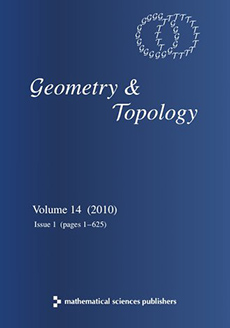Abstract
In this paper we establish a universal characterization of higher algebraic –theory in the setting of small stable –categories. Specifically, we prove that connective algebraic –theory is the universal additive invariant, ie the universal functor with values in spectra which inverts Morita equivalences, preserves filtered colimits and satisfies Waldhausen’s additivity theorem. Similarly, we prove that nonconnective algebraic –theory is the universal localizing invariant, ie the universal functor that moreover satisfies the Thomason–Trobaugh–Neeman Localization Theorem.
To prove these results, we construct and study two stable –categories of “noncommutative motives”; one associated to additivity and another to localization. In these stable –categories, Waldhausen’s –construction corresponds to the suspension functor and connective and nonconnective algebraic –theory spectra become corepresentable by the noncommutative motive of the sphere spectrum. In particular, the algebraic –theory of every scheme, stack and ring spectrum can be recovered from these categories of noncommutative motives. In the case of a connective ring spectrum , we prove moreover that its negative –groups are isomorphic to the negative –groups of the ordinary ring .
In order to work with these categories of noncommutative motives, we establish comparison theorems between the category of spectral categories localized at the Morita equivalences and the category of small idempotent-complete stable –categories. We also explain in detail the comparison between the –categorical version of Waldhausen –theory and the classical definition.
As an application of our theory, we obtain a complete classification of the natural transformations from higher algebraic –theory to topological Hochschild homology () and topological cyclic homology (). Notably, we obtain an elegant conceptual description of the cyclotomic trace map.
Citation
Andrew J Blumberg. David Gepner. Gonçalo Tabuada. "A universal characterization of higher algebraic $K\mkern-4mu$–theory." Geom. Topol. 17 (2) 733 - 838, 2013. https://doi.org/10.2140/gt.2013.17.733
Information





